Gonorrhoea
Gonorrhoea (sometimes called ‘the clap’, ‘drip’ or ‘a dose’) is a bacterial sexually transmitted infection (STI). Gonorrhoea can infect the cervix, anus, throat, urethra, and eyes. It is transmitted through unprotected vaginal, anal or oral sex, open-mouth kissing, or infected body fluids entering the eye. Gonorrhoea can be treated with antibiotics, though some strains are resistant to some antibiotics. Gonorrhoea will not go away without treatment.
If left untreated, gonorrhoea can lead to pelvic inflammatory disease (PID) and infertility. It can also cause permanent damage to the eyes, joints, heart or brain.
Gonorrhoea (sometimes called ‘the clap’, ‘drip’ or ‘a dose’) is a bacterial sexually transmitted infection (STI). Gonorrhoea can infect the cervix, anus, throat, urethra, and eyes. It is transmitted through unprotected vaginal, anal or oral sex, open-mouth kissing, or infected body fluids entering the eye. Gonorrhoea can be treated with antibiotics, though some strains are resistant to some antibiotics. Gonorrhoea will not go away without treatment.
If left untreated, gonorrhoea can lead to pelvic inflammatory disease (PID) and infertility. It can also cause permanent damage to the eyes, joints, heart or brain.
Signs and Symptoms
Gonorrhoea is often asymptomatic, especially in people with vaginas. If symptoms do occur, it will usually happen within 2 to 7 days of exposure but can take up to 2 weeks.
Vagina/Vulva
Gonorrhoea can show no symptoms, particularly for people with vaginas. If signs or symptoms are present, there may be:
- Green or yellow vaginal discharge
- Unpleasant vaginal odour
- Pain or burning sensation when urinating
- Pelvic pain, especially during sex
- Irregular bleeding, especially between periods or after sex
Penis
You can have gonorrhoea without showing any symptoms. If signs or symptoms are present, there may be:
- Thick, yellow or white discharge from the penis
- Pain, discomfort or burning sensation when passing urine
- Pain in the testes (balls)
- Redness around the urethra/opening of the penis
Anus/Rectum
Gonorrhoea can be asymptomatic. If signs or symptoms are present, there may be:
- Anal itching
- Feeling like having to poo, even when your bowels are empty
- Anal discharge
- Anal bleeding
Throat
Gonorrhoea often shows no symptoms at all, and gonorrhoea infection of the throat is very common. If signs or symptoms are present, there may be:
- Sore, dry throat
Eyes
Gonorrhoea of the eyes can cause serious health issues and must be treated immediately. Symptoms can include:
- Redness
- Discharge, like conjunctivitis
Symptom Images (content warning: click or tap to expand)
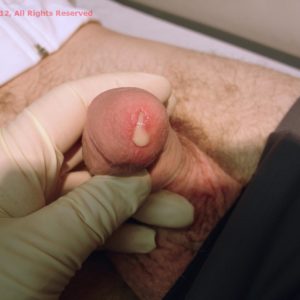 Gonorrhoea discharge from a penis
Gonorrhoea discharge from a penis
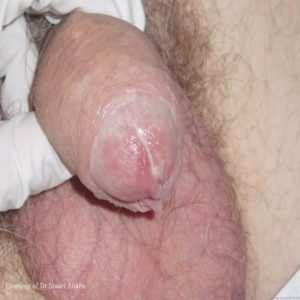 Gonorrhoea discharge from a penis with urethritis
Gonorrhoea discharge from a penis with urethritis
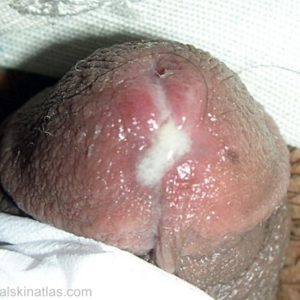 Gonorrhoea discharge from a penis
Gonorrhoea discharge from a penis
 임질로 인한 포피염
임질로 인한 포피염
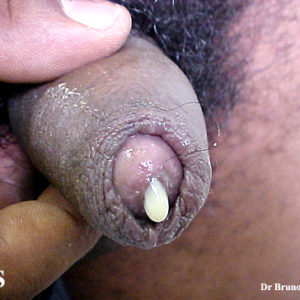 Gonorrhoea discharge from a penis
Gonorrhoea discharge from a penis
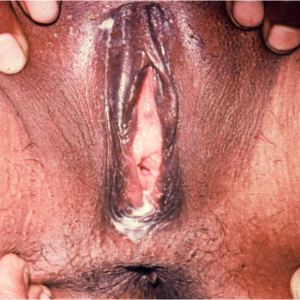 Gonorrhoea discharge from a vagina
Gonorrhoea discharge from a vagina
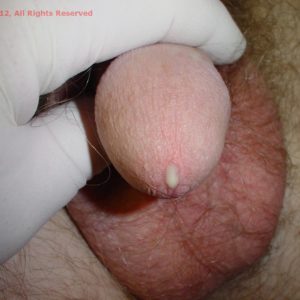 Gonorrhoea discharge from a penis
Gonorrhoea discharge from a penis
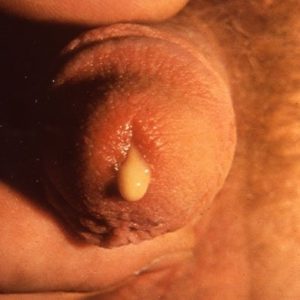 Gonorrhoea discharge from a penis
Gonorrhoea discharge from a penis
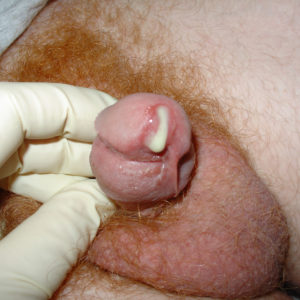 Gonorrhoea discharge from a penis
Gonorrhoea discharge from a penis
 Gonorrhoea discharge from a penis
Gonorrhoea discharge from a penis
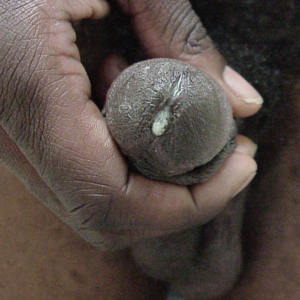 Gonorrhoea discharge from a penis
Gonorrhoea discharge from a penis
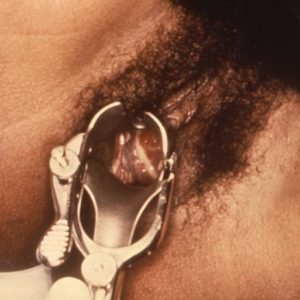 Gonorrhoea discharge from a vagina
Gonorrhoea discharge from a vagina
Transmission
Gonorrhoea is mainly transmitted through vaginal, anal or oral sex or through infected body fluid getting into the eyes. Gonorrhoea can be transmitted via:
- Unprotected/”natural” oral, vaginal or anal sex.
- Some evidence suggests that a high proportion (~80%) of gonorrhoea transmissions are from kissing.
- Mutual masturbation and fingering or fisting without gloves.
- Sharing sex toys without using condoms.
- Semen or vaginal fluids entering the eyes during sex or touching your eyes when you have infected body fluid on your hands.
- Docking or nudging genitals without condoms.
- Parent to baby during birth.
Gonorrhoea can be transmitted even when the person with gonorrhoea has no symptoms. You cannot get gonorrhoea from toilets, swimming pools, spas or everyday contact with people.
Prevention
As gonorrhoea is often asymptomatic, regular sexual health screening is highly recommended. You can view a list of sex worker-friendly sexual health clinics on our Where To Test page.
Additional ways to prevent gonorrhoea transmission include:
- Use condoms for vaginal and anal sex.
- Use condoms for oral sex/blow jobs.
- Avoid touching the genitals or eyes if your hands have come in contact with body fluids.
- Change condoms between vaginal or anal sex and blow jobs to avoid spreading a potential infection to your throat.
- Use condoms on toys if you are sharing them. Change condoms between partners or when moving them from one body part to another (for example, the vagina to the mouth).
- Point the penis away from the face during Spanish or hand relief to prevent semen from getting in the eyes.
- There is increasing evidence that DFK (deep kissing) can also transmit gonorrhoea of the throat. Regular throat swabs are recommended if you provide this service.
- A good way to tell if a client with a penis has gonorrhoea is to ‘milk’ the penis (before they shower or go to the toilet). Gently squeeze the penis along the shaft; if a thick discharge appears, it may be gonorrhoea. Find out how to perform a sexual health check on a client here.
- Hold the base of the condom when withdrawing so semen doesn’t spill out.
Important update on the ‘mouthwash study’
We have previously provided information on the first phase of the OMEGA study, which researched whether gargling with Listerine had any impact on oropharyngeal (throat) transmission of gonorrhoea.
The final stage of the OMEGA study determined that is no conclusive evidence that gargling with mouthwash will prevent the transmission of gonorrhoea to the throat. If further research on this topic provides different findings, we will update this resource.
Testing
Because gonorrhoea may not show symptoms, testing is a good way to help detect it. Here’s some information about testing for gonorrhoea. You can view a list of sex worker-friendly sexual health clinics on our Where To Test page.
Testing Method
- Urine test (all genitals)
- Swab (urethra) test if there is penile discharge
- Swab (vagina and cervix)
- Swab (anus and throat)
- Some sexual health centres allow you to collect some of your own swabs and will provide instructions about how to do so.
When to Test
- If you’re concerned about potential exposure to gonorrhoea, testing 1-2 weeks after exposure is recommended. An earlier test may not detect an infection.
- Test as part of your regular sexual health screening. If you provide uncovered/natural oral sex or kissing services, ask for a throat swab if one is not offered.
- Test if you have symptoms.
- Test if a sexual partner has tested positive for gonorrhoea. Your doctor may also recommend treatment at the time of testing due to having had sexual contact with someone with the infection.
Other Info
- Gonorrhoea will not go away by itself and may cause severe complications if left untreated.
- Gonorrhoea is part of standard STI screening. You may have to ask the doctor or nurse to include anal or throat swabs.
- Sexual health clinic testing is often bulk billed, even if you don’t have Medicare, so the test will most likely be free.
- You may pay a fee or be bulk billed if you see a GP.
Treatment
Gonorrhoea is very treatable, and treatment is necessary – gonorrhoea doesn’t go away by itself. Here’s what you need to know about treating it.
Treatment Method/s
- Combination of a one-time antibiotic injection and single-dose oral antibiotic.
- Some strains are becoming resistant to commonly used medications. Testing again two weeks after treatment and three months after treatment will tell you whether your treatment has been successful.
Costs and Other Information
- Inform a doctor if exposure to gonorrhoea occurred overseas or from an overseas client, as many drug-resistant strains come from outside Australia.
- Treatment costs will depend on which antibiotic you are prescribed.
- Sexual health clinic treatments are often bulk billed, even if you don’t have Medicare, so the treatment may be free.
- You may pay a fee or be bulk billed if you see a GP.
- Gonorrhoea is cured by effective treatment, but you do not develop immunity. It is possible to get gonorrhoea again.
How might this impact my work?
Practical Considerations
- Gonorrhoea is one of the most prevalent STI for sex workers because it’s not always detectable.
- It is recommended that you do not have sex for 7 days after treatment
- If you can’t avoid having sex, using a condom will help lower the chance of transmitting gonorrhoea, but there is no guarantee.
- Some antibiotics can reduce the effectiveness of oral contraception (‘the pill’).
- If you often get thrush when you take antibiotics, you may want to take probiotics during and after your treatment to help prevent this.
- You should inform any recent doubles partners if you test positive for gonorrhoea.
Legal and Reporting Considerations
- Some states and territories may have laws that criminalise sex working or having sexual contact while you have a BBV or STI. Check out our BBV, STI and the Law resource or contact your local sex worker peer organisation for more information.
- Contact tracing of previous sexual partners (known as ‘partner notification’) is a consideration for some BBV and STI. It should be done with consideration of the unique transmission risk and privacy needs of sex workers. Your local sex worker peer organisation can advise on any partner notification process to ensure it is appropriate for your circumstances.
- Gonorrhoea is a nationally notifiable disease in Australia, meaning diagnosed cases of gonorrhoea are anonymously reported to state or territory health departments.
You Might Also Be Interested In…
What are BBV & STI?
Lorem ipsum dolor sit amet, consectetur adipiscing elit, sed do eiusmod tempor incididunt ut labore et dolore magna aliqua. Ut enim ad minim veniam, quis nostrud exercitation ullamco laboris nisi ut aliquip ex ea commodo consequat.
Testing Timeframes
Lorem ipsum dolor sit amet, consectetur adipiscing elit, sed do eiusmod tempor incididunt ut labore et dolore magna aliqua. Ut enim ad minim veniam, quis nostrud exercitation ullamco laboris nisi ut aliquip ex ea commodo consequat.
Alternative Services
Lorem ipsum dolor sit amet, consectetur adipiscing elit, sed do eiusmod tempor incididunt ut labore et dolore magna aliqua. Ut enim ad minim veniam, quis nostrud exercitation ullamco laboris nisi ut aliquip ex ea commodo consequat.
Testing Locations
Lorem ipsum dolor sit amet, consectetur adipiscing elit, sed do eiusmod tempor incididunt ut labore et dolore magna aliqua. Ut enim ad minim veniam, quis nostrud exercitation ullamco laboris nisi ut aliquip ex ea commodo consequat.





